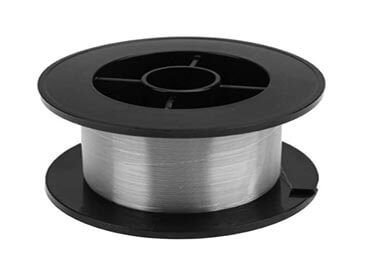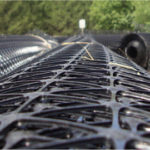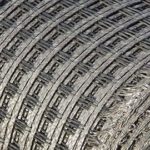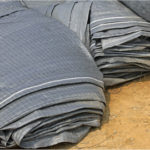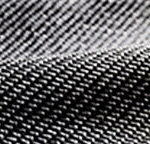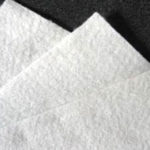Geotextile Fabric
Geotextiles have been used for thousands of years. Geotextiles were used in roadway construction dating back to the days of the Pharaohs to stabilize roadways and their edges. These early geotextiles were made of natural fibers, fabrics or vegetation mixed with soil to improve road quality, particularly when roads were made on unstable soil. Only recently have geotextiles been used and evaluated for modern road construction. A geotextile is defined as any permeable textile material that is used with foundation, soil, rock, earth, etc. to increase stability and decrease wind and water erosion. A geotextile may be made of synthetic or natural fibers. Modern geotextiles are usually made from a synthetic polymer (such as polypropylene, polyester, polyethylenes and polyamides) or a composite of natural and synthetic material.
Geotextiles can be woven, knitted or non-woven. Different fabric composition and construction are suitable for different applications. The non-woven geotextile is an arrangement of fibers either oriented or randomly patterned in a sheet, resembling felt. These geotextiles provide planar water flow in addition to stabilization of soil. Typical applications include access roads, aggregate drains, asphalt pavement overlays, and erosion control.
Woven geotextile looks like burlap. It is a fabric made of two sets of parallel strands systematically interlaced to form a thin, flat fabric. The strands are of two kinds – slit film which are flat, or monofilaments which are round. The way these two sets of yarns are interlaced determines the weave pattern that in turn determines the best application for that woven fabric. Weave patterns come in a virtually unlimited variety that do affect some properties of the fabric. Woven geotextiles are generally preferred for applications where high strength properties are needed, but where filtration requirements need to be met.
Civil engineers will use their knowledge and training to incorporate the best type of geotextile in the roadway projects. Asimpa can help provide recommendations if a project has not been engineered.
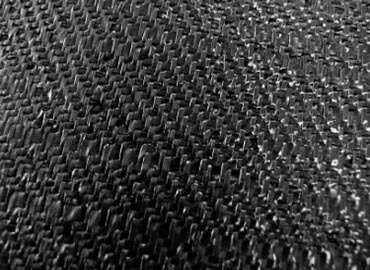

WOVEN GEOTEXTILE
Woven geotextiles offer greater strength and filtration capabilities than nonwoven fabrics, and are frequently used to shore up weak subsoil conditions. Asimpa fabrics resist deterioration from ultraviolet light, rotting, biological degradation and natural soil chemicals.
SPEC SHEETS
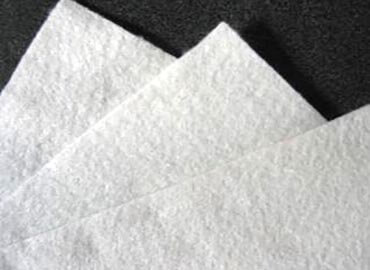

NON-WOVEN GEOTEXTILE
Asimpa’s needle-punched nonwoven geotextile fabrics are dimensionally stable, and best suited for separation and drainage. These geotextile products resist ultraviolet deterioration, rotting, biological degradation and natural soil chemicals.
SPEC SHEETS
- AS 3.0 N
- AS 3.5 N
- AS 4.0 N
- AS 4.0LT N
- AS 4.5 N
- AS 6.0 N
- AS 7.0 N
- AS 8.0 N
- AS 10.0 N
- AS 12.0 N
- AS 16.0 N
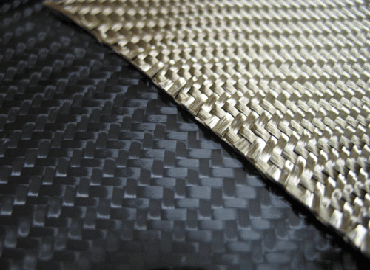

HIGH STRENGTH WOVEN GEOTEXTILE
SPEC SHEETS
Geotextile Fabric, Geogrids, and Liners
Make Short Work of Erosion Control with Asimpa, LLC
High-quality products like geotextile fabric and geogrids are your frontline defense in any urgent erosion control situation. Any time you begin a heavy civil construction project that will disturb the ground, you can’t afford delays when an environmental emergency strikes, or when you’re rushing to fulfill DOT regulations.
Asimpa, LLC provides the highest quality geotextile fabric, geogrids, and liners that play a special role in erosion control, including subsurface drainage and soil reinforcement..
Regardless of your location or project, you can expect the same exceptional customer service experience from the professionals at Asimpa, LLC.
Geotextile Fabric –
Designed using woven or nonwoven (needle-punched and spun-bonded) fabrics, our geotextile fabric is manufactured with highly durable polypropylene filaments, and is approved by many local, state, and federal agencies. Resistant to UV rays and biological clogging, our geotextile fabric contains extreme filtration capabilities ideal for subsurface drainage, roadway stabilization, landfill leachate collection, silt fences, and sediment control.
Geogrids –
Designed with high tensile strength in spite of their large aperture size, geogrids are perfect for base reinforcement, soft soil stabilization, and silt fencing support. Manufactured using varying degrees of polyolefin resins, our geogrids can be designed to withstand various weight loads and time frames depending on the project required.
Plastic Liners –
Our multi-purpose polyethylene liners are impermeable, and ideal for containing, controlling, and protecting your work site and materials. Use them for spill containment, contamination, geomembrane lining, and to assist with water filtration and soil reinforcement.
Asimpa, LLC provides top-quality products at affordable prices
to ensure your project is completed on time without any negative environmental impact.
To get more information call us at 912-656-8200 today for a free estimate.

